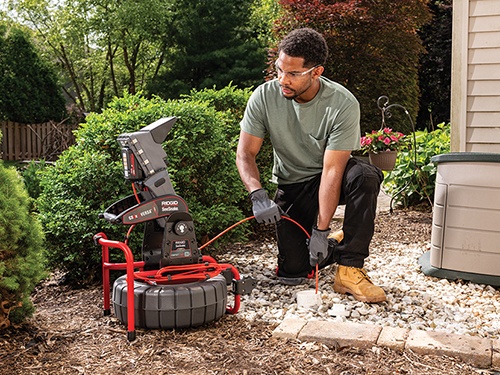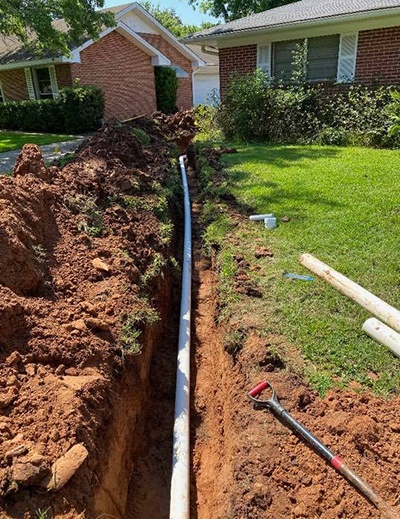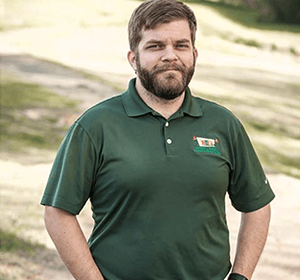Updated: Sept 23, 2023
Maybe you’ve heard about it from a neighbor or family member. Maybe you’ve seen the aftermath in pictures online or even in person. All you know for sure is that you want to keep sewage backflow from causing property damage and unhealthy living conditions in your home.
Contact Us for Plumbing Services!
In this blog post, we’ll equip you with the following knowledge related to this serious plumbing issue:
- What Is Sewage Backflow?
- What Causes Sewage Backflow?
- Signs that Your Home Has a Backflow Issue
- Problems Caused By Sewage Backflow
- How to Prevent Sewage Backflow
Do you smell sewage coming from your drains? Contact the plumbing professionals at Bobby L Greene Plumbing, Heating & Cooling Co. right away to diagnose the problem.
What is sewage back flow?
When your plumbing system is functioning properly, water flows only in one direction through each pipe. This is an integral part of your plumbing system’s design that keeps your home and the water that you use sanitary. The water that you get from your faucets comes from your water main, and all of your wastewater leaves your home through drains and eventually the sewer line.
Think about it: you wouldn’t want the water that comes out of your faucets to travel through the same plumbing pipes as the dirty wastewater that you just put down the drain.
Now that we’ve cleared up how water is supposed to travel through pipes (in one direction), you probably have a pretty good guess of what “backflow” means. Backflow occurs when water flows backward through your plumbing system. Sewage backflow refers to backflow that can come from a number of dirty sources, including toilets, washing machines, dishwashers, outdoor pools, sprinkler systems, and gutters. The result is not pretty.
What causes sewage backflow
How does the backflow phenomenon occur? Unlike a backup, which can be caused by clogs, backflow occurs when there’s a sudden drop in water pressure, usually in your potable (clean) water line. That drop in pressure in one part of the system causes the water in other nearby parts of the system to start flowing backward because of back pressure.
Signs that your home has a back flow issue
A backflow problem in your home may manifest in subtle ways. Other signs are hard to miss.
If you notice any of the following clues, it’s time to call a plumber ASAP:
- Problems with water pressure
- Strange- or bad-tasting water
- Dirty or discolored water comes out of faucets
- Slow or frequently clogged drains
- Multiple clogs at the same time
- Drains give off sewage smell or other bad odors
Problems caused by sewage back flow
There are two major causes for concern for a home with a sewage backflow issue: health endangerment and property damage.
Sewage backflows can contaminate your water with numerous viruses, harmful bacteria, and toxic substances. These contaminants can cause the members of your household to become very ill.
Some of the most commonly found bacteria in sewage (such as E. Coli, Hepatitis, and Leptospirosis) can harm humans in the following ways:
- Diarrhea
- Muscle Aches
- Abdominal cramping
- Vomiting
- Liver infections and sometimes liver failure
- Death, though rarely
If your home becomes flooded with sewage backflow, not only will you have water damage to repair, but you’ll have contaminated property to contend with as well. After the dirty water is pumped out, whatever cannot be deep-cleaned must be disposed of and replaced. Some homeowners are faced with replacing entire walls and floors in the wake of a sewage backflow issue.
In addition, if the water is not cleaned up in time, it can lead to mold growth in as little as 24 hours. Mold spores worsen your indoor air quality and can aggravate allergies, asthma, and other chronic respiratory illnesses.
How to prevent sewage back flow in pipes
To prevent sewage backflow, many commercial buildings and some residential buildings have a backflow prevention device installed in their plumbing system. This device usually consists of multiple check valves that keep water from flowing backward if a drastic change in water pressure triggers back pressure. This device needs to be checked regularly (usually once a year) to ensure that it’s still working.
If your home does not have a backflow prevention device, it is a wise idea to get one installed and then annually tested by a plumber to make sure that it is functioning properly.
If it has been well over a year since you’ve checked “back flow testing” off of your home maintenance checklist, contact Bobby L Greene Plumbing, Heating & Cooling Co.. for an appointment with one of our backflow plumbing specialists.
Contact Us for Plumbing Services!


